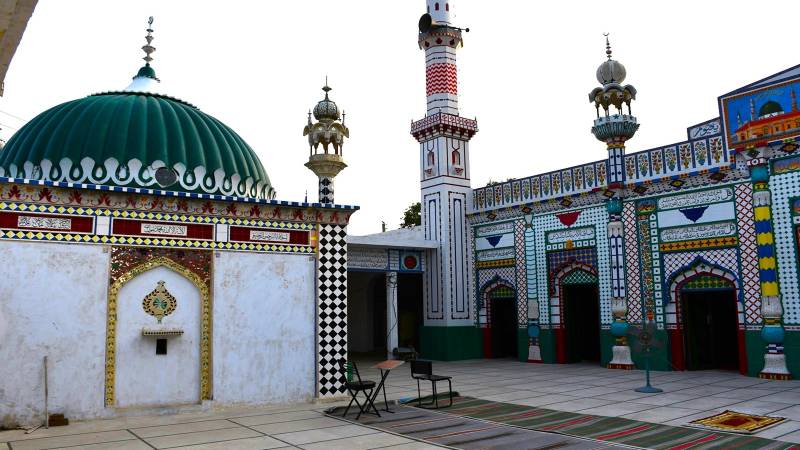Gujar Khan tehsil has more shrines than any other tehsil in Rawalpindi district. There is a shrine in almost every main village. Saints and scholars who played an important role in imparting religious education are buried in some of these shrines. Due to their teachings, some villages became centres of learning, and many people benefited from those scholars and saints. One such village is Dhoke Shams in Gujar Khan, which also became a centre of Qadiri Sufis.
A shrine is located in Dhoke Shams village, housing the graves of two brothers, Maulana Muhammad Khalil-ur-Rehman and his brother Qazi Muhammad Habib-ur-Rehman. Dhoke Shams is located near Miana Mohra Ada. Both brothers were celebrated saints and scholars of the Dhoke Shams village. Their father, Qazi Muhammad Hussain, son of Qazi Khuda Bakhsh, was an alim (scholar) and Sufi. He was Imam Masjid at Bajrana village. According to Gujar Khan Ke Suhrawardi Mashaikh by Hasan Nawaz Shah (2013:57), Qazi Muhammad Hussain was initiated into Naqshbandiyya Silsila by Khwaja Muhammad Khan Alam Naqshbandi (d.1872), whose shrine is located in Jhelum’s Baoli village.
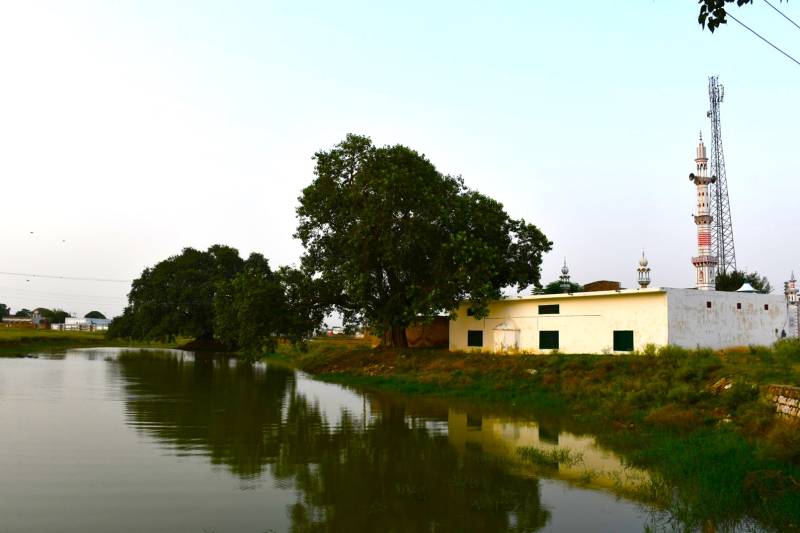
Hasan Nawaz Shah has written in his forthcoming book Tazkira Ulama-e-Gujar Khan that Qazi Muhammad Hussain belonged to the Awan tribe. Moreover, he argues that Qazi Muhammad Hussain used to teach in the madrassah at Bajrana and had a friendly relationship with Syed Baba Gulab Shah Shirazi (d.1891), who was a deputy of Sain Karam Bakhsh (d.1850), whose shrine is located at Chak Bahadur village. I have written an article titled "Mystics of Gujar Khan's Chak Bahadur and Bajrana Villages" about Sain Karam Bakhsh, which was published on 3 May 2024.
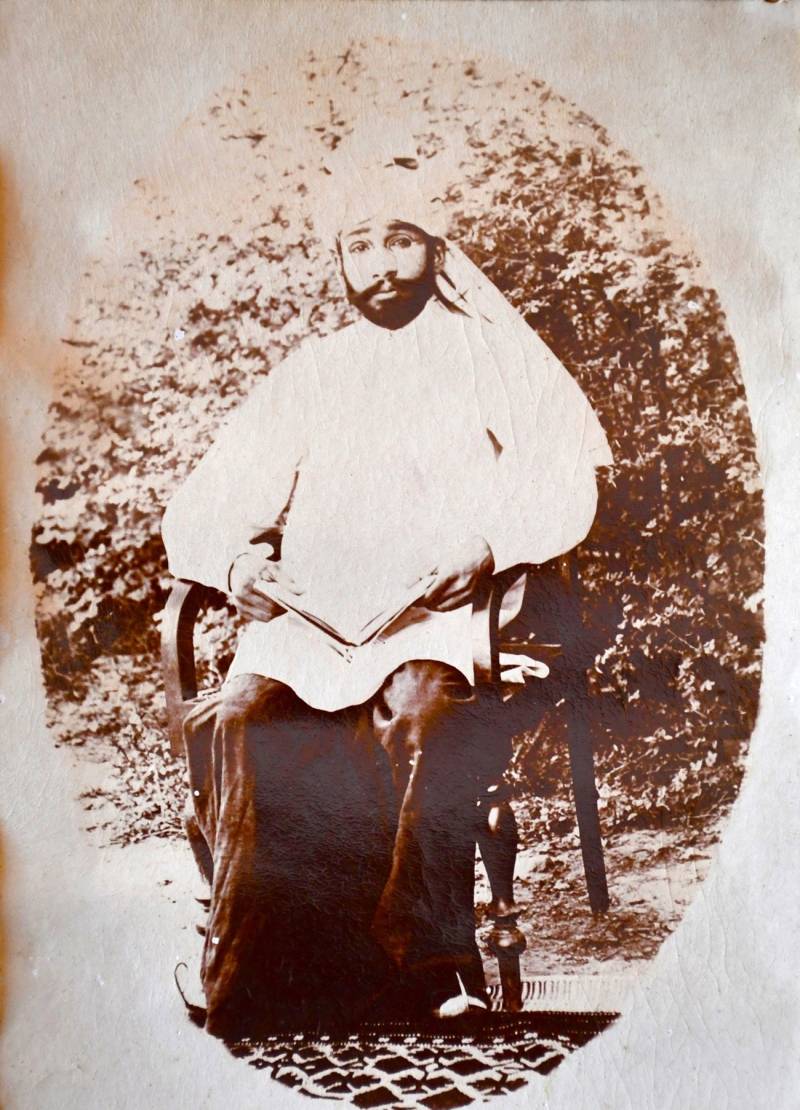
Qazi Muhammad Hussain and Mian Muhammad Zaman of Mastala village belonged to the same family of the Awan tribe. Qazi Muhammad Zaman Mastalvi, son of Imam Bakhsh, was an eminent scholar, Katib (scribe) and poet of Punjabi. He was the katib of more than 36 manuscripts, many of which are kept in Kutab Khana Ganj Bakhsh Islamabad. He died in 1895 and was buried in a Mastala village graveyard. From his son Qazi Fazal Ahmed Mastalvi’s (d. 1936) Bayaz ( notebook), one can find the date of Mian Muhammad Zaman Mastalvi’s death in 1895.
Qazi Muhammad Hussain died in 1892 and was laid to rest in a cemetery in Bajrana village. On December 3, 2023, I visited the Bajrana graveyard with Hasan Nawaz Shah from Narali and Ahmed Ali Mansoor from Vehari. During the visit, I took photographs of the graves of Qazi Muhammad Hussain, Aapa Razia Begum (daughter of Qazi Khalil-ur-Rehman, son of Qazi Muhammad Hussain), and Qazi Aziz-ur Rehman (d.1989), son of Wahabuddin. According to Kuliyat Haji Alam, compiled by Hasan Nawaz Shah in 2007, Qazi Aziz-ur-Rehman was a Punjabi poet.
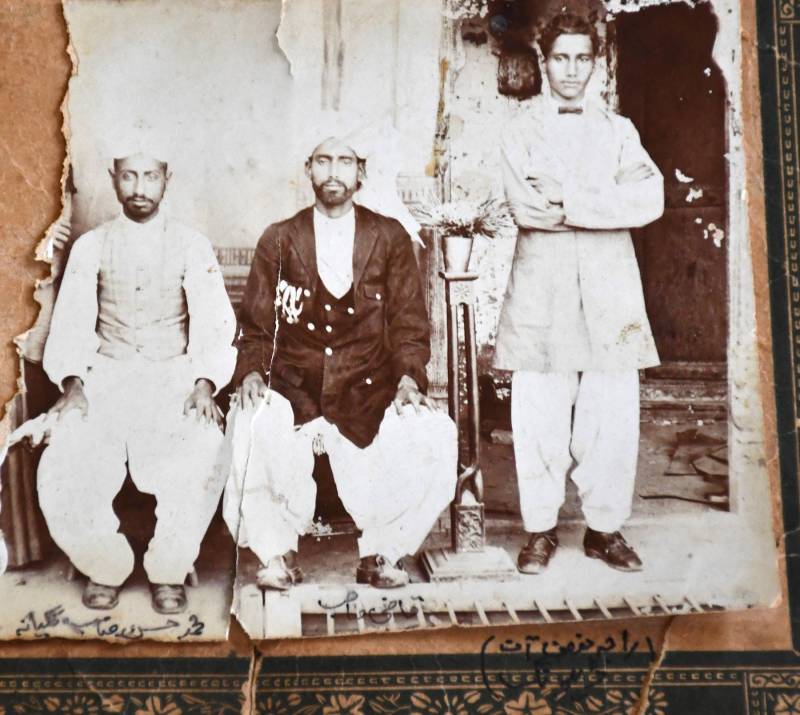
Qazi Muhammad Hussain had two sons, Maulana Muhammad Khalil-ur-Rehman and Qazi Muhammad Habib-ur-Rehman. The eldest son, Maulana Muhammad Khalil-ur-Rehman, was born in Dhoke Shams in 1884. He was an eminent scholar and saint who completed his studies in Kanpur. Hasan Nawaz Shah (2013:30) asserts in Gujar Khan Ke Suhrawardi Mashaikh that both Syed Muhammad Chanan Shah Bajranvi (d. 1928) and Maulana Khalil-ur-Rehman were initiated in Qadiriyya Silsila by Qazi Sultan Mehmood Qadiri (d.1919) whose shrine is located in Gujrat’s Awan Sharif. One gets to know from Maqalat-e-Mehmood by Nawab Mashooque Yar Jang Bahadur (2004) that Qazi Sultan Mehmood Qadiri was initiated into Qadiriyya Silsila by Akhund Abdul Ghaffur (d.1878). He was also known as Akhund Sahib or Saidu Baba. The shrine of Akhund Sahib is located in Saidu Sharif in Swat.
The list of deputies of Qazi Sultan Mehmood Qadiri is extensive. Some of his prominent deputies included Molvi Abdur Rehman (d. 1953) from Pindi Sarhal in Attock, Mistri Ahmed Bakhsh (d.1935) from Rawalpindi’s Ratta Amral, Master Moula Bakhsh Amritsari, Molvi Sirajuddin Lahori, Hafiz Abdullah Shah (d.1941), Mulla Niazuddin Terahi, Sain Chup, Pir Sher Shah (d.1901), Maulana Muhammad Khalil-ur-Rehman, and many others.
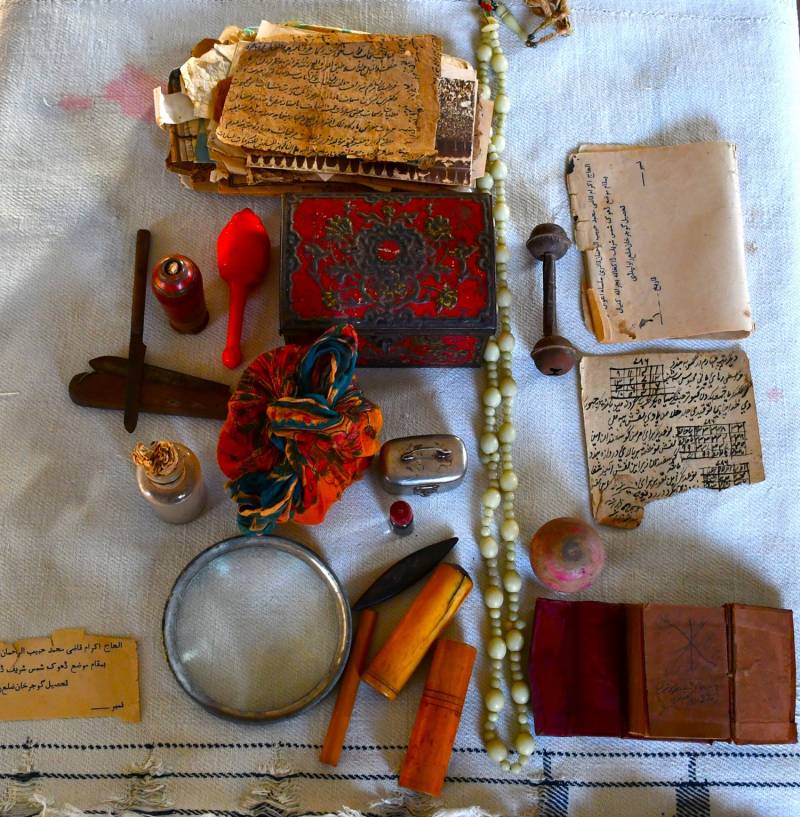
After receiving a robe of initiation from Qazi Sultan Mehmood Qadiri, Maulana Muhammad Khalil-ur-Rehman began spreading the Qadiriri Silsila from his village, Dhoke Shams, which became a prominent Qadiri centre during his time. His spiritual mentor, Qazi Sultan Mehmood Qadiri, wrote about 155 letters in Persian to many notable individuals, including one to Maulana Muhammad Khalil-ur-Rehman. In 1918, Maulana Muhammad Khalil-ur-Rehman compiled all the letters of his spiritual master and named the collection Majmu’a Maktubat Sharifat. This compilation took place before the death of Qazi Sultan Mehmood Qadiri in 1919. In fact, two volumes are combined in the collection, titled Majmu'a Maktubat Sharifat (containing letters) and Majmu'a Ijazat Sharifat.
Maulana Muhammad Khalil-ur-Rehman also wrote poetry in Persian. Two of his Persian poems have been included in Chashma-e-Noor by Syed Noorullah Shah, the son of Molvi Charag Shah. The bayaz of Maulana Muhammad Khalil-ur-Rehman, now housed in the Makhduma Amir Jan library at Narali, contains the selected poetry of Sufi saints.
Maulana Muhammad Khalil-ur-Rehman died in 1924 and was buried in Dhoke Shams. The shrine of Maulana Muhammad Khalil-ur-Rehman is located near a village tank in Dhoke Shams village. The shrine contains two graves, one of Maulana Muhammad Khalil-ur-Rehman and the other of his brother Qazi Muhammad Habib-ur-Rehman. According to Hasan Nawaz Shah’s (2013) Gujar Khan ke Suhrawardi Mashaikh and Tazkira Ulama-e-Gujar Khan (forthcoming), Qazi Muhammad Habib-ur-Rehman was also a disciple of Qazi Sultan Mehmood Qadiri. He was a prominent Qadiri Sufi and scholar in Dhoke Shams village. He died in 1970, leaving behind his daughter, Ghulam Sughra, who was married to Subedar Chaudhry Sadiq Hussain (d.1991).
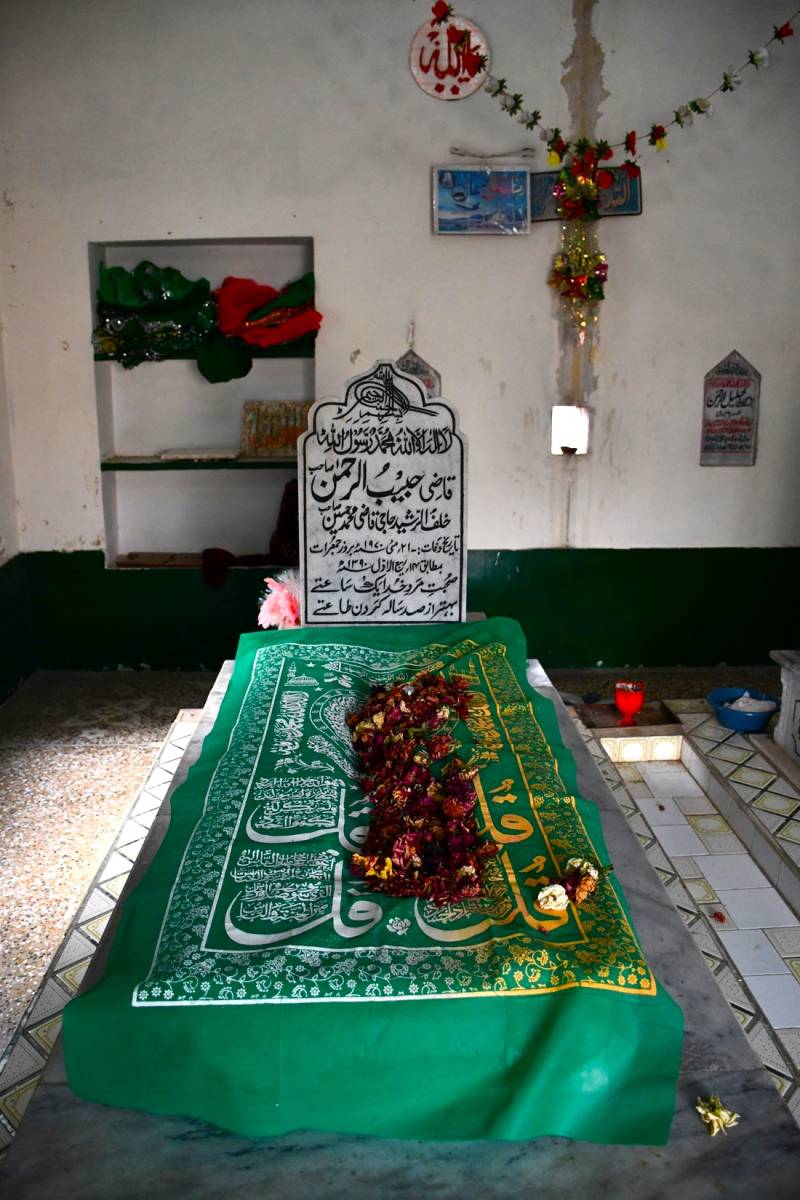
I visited Dhoke Shams twice with Hasan Nawaz Shah: first on the 3rd of December 2023 and then on the 16th of March 2024. During the second visit, we were shown photographs of Maulana Muhammad Khalil-ur-Rehman and Qazi Habib-Rehman. In one of the photographs, Qazi Muhammad Habib-ur-Rehman is pictured with Muhammad Hasan of Gulyana on the left and Raja Munsaf Khan of Dhong village on the right. We were also shown books and objects that were used by Maulana Muhammad Khalil-ur-Rehman and Qazi Muhammad Habib-ur-Rehman, which were kept in the custody of Ghulam Sughra, the daughter of Muhammad Habib-ur-Rehman. Now, these items are in the custody of Chaudhry Saad Nawaz, who is the grandson of Ghulam Sughra.
The tomb of Maulana Muhammad Khalil-ur-Rehman is built on a square plan. It was painted initially, but during a later renovation, the painting was replaced with glasswork. Maulana Muhammad Khalil-ur-Rehman constructed the adjacent Jamia mosque, which has recently undergone renovation. The shrine of Maulana Muhammad Khalil-ur-Rehman is the most prominent in the village and is frequently visited by his followers, who come to pay homage to both brothers. They played a significant role in preaching the Qadiriyya Silsila in Gujar Khan tehsil.


